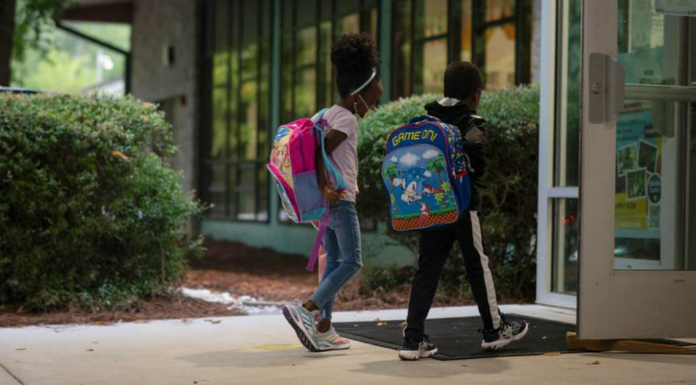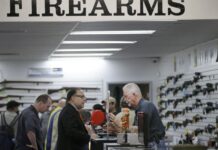There’s this saying that politics is perception. Shaping public policy is done through the game of creating perceptions (or misperceptions). Those of us who are Second Amendment advocates know this well; we have to continuously fight outright lies meant to create the misperception of gun ownership as a vice, because that misperception will be used to strip us of our natural right to keep and bear arms.
The Gun Violence Archive is a leading example of the campaign of disinformation created by the gun control movement. It’s not surprising that the public misperceives violence. But that misperception is not supported by the numbers.
James Alan Fox, a Professor of Criminology at Northeastern University, wrote this at USA Today (archived links):
As students head back to school, should parents worry about shootings? The math says no.
Students and parents are worried about mass shootings as the school year begins. But the math says indiscriminate shootings aren’t as common as we think.
The new school year is suddenly here. Students and their parents are heading off to local stores to stock up on school supplies. Meanwhile, ongoing news stories linked to the despicable acts of dispirited assailants from Nashville, Tennessee, Uvalde, Texas, and Oxford, Michigan, who targeted their local school provide no summertime respite from thinking – and worrying – about school shootings.
By most any measure, fears concerning school safety are running high. An NPR/PBS NewsHour/Marist national survey from May found that 40% of respondents felt that schools in their community were unsafe with regard to the risk of gun violence, up from 30% in 2019.
Moreover, according to last year’s Gallup polling, 44% of parents feared for their child’s safety at school, the highest level since the mass shooting at Columbine High School in April 1999. And 20% of these parents indicated that their child had expressed such concerns, a level only exceeded back in 2001.
[…] Fears are also fueled by the widely reported – and somewhat misleading – statistics on school shootings: more than a hundred a year, according to databases from Everytown for Gun Safety and the Center for Homeland Defense and Security.
The trick to a successful disinformation campaign is the creation of multiple seemingly nonpartisan, disinterested groups and repeating the same lies through all of them. The gun control movement has been implementing this strategy well. It is very disappointing to see the same disinformation coming from the taxpayer-funded Naval Postgraduate School, which runs the Center for Homeland Defense and Security.
Majority of school shootings aren’t indiscriminate slaughters
Although their numbers are accurate, the underlying details are revealing. The vast majority of these shootings are not at all like the indiscriminate slaughters seen in Nashville, Uvalde and Oxford.
These databases include suicides, accidental shootings, shootings not involving students or faculty, shootings on school property but not associated with school activities, and even some occurring on weekends or evenings.
A clearer picture is provided by a Washington Post database that focuses specifically on shootings during school hours. Over the past two dozen school years (1999-2000 onward), the Post’s database includes 384 incidents, averaging 16 per year – not hundreds, but still alarming. However, three-quarters resulted in no fatalities and one-third in no one being shot.
The press loves sensationalism. Parroting what’s in these biased databases boosts the sensationalism.
As often said, one is one too many. And in this instance, the past couple decades have witnessed an average of one indiscriminate fatal school shooting per year. That’s one out of nearly 130,000 schools nationwide.
Of course, the tragedy surrounds the students and staff members who are senselessly killed while at school. Overall, 188 fatalities have taken place since the 1999-2000 school year, averaging just eight annually.
That’s out of more than 60 million students and staff members in America’s schools, for a 1-in-8 million risk.
To put things in perspective, the CDC says that the odds of being struck by lightning in a given year are less than one in a million.
Our nation’s schools are safe. In fact, only one-half of 1% of school-age victims of gun homicide are killed at school. Children are safer in school, where they have supervision and structure, than on playgrounds, ball fields and street corners. Indeed, some are safer at school than in their own home.
We are spending $3 billion a year on school security, including surveillance systems and school resource officers, when the vast majority of shootings take place outside of the school building – in parking lots and athletic fields.
We force youngsters to participate in repeated and sometimes unannounced active shooter drills, sending a message of imminent danger and traumatizing countless students, when active shooter events in schools remain extremely rare, albeit horrific.
Much of the security funds can be better spent on school psychologists, guidance counselors, school nurses and classroom teachers. Not only are these professionals in a position to recognize students at risk of committing violence, but they also benefit millions of youngsters through the full range of valuable services they provide.
This is a well-rounded article. Please read it in its entirety and share it with your family and friends.




